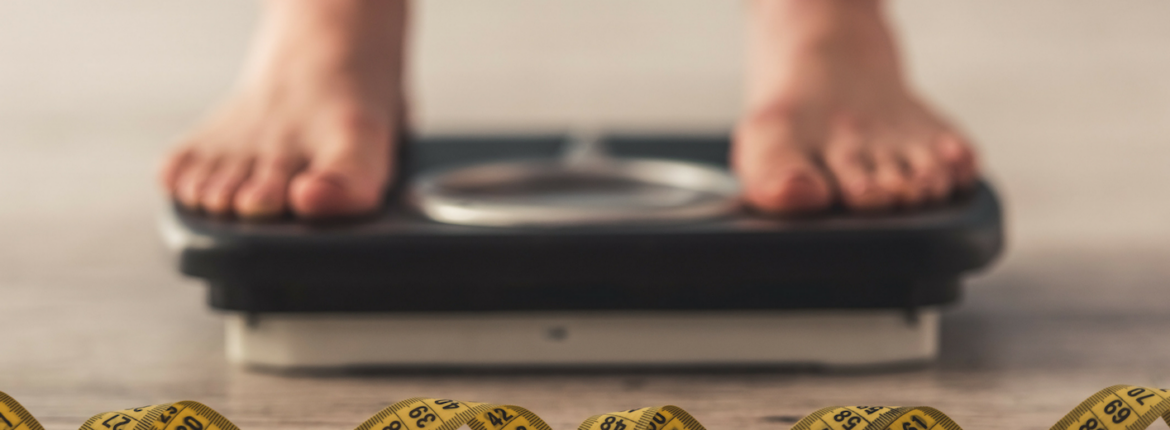

Happy New Year! The holidays are over, and everyone’s ready to start fresh.
Probably because of, well…the holiday season. Packed with decadent meals that taste amazing for a few minutes, those rich dinners stay parked in undesirable places for weeks afterwards.
So, what with all of the holiday dinners to work off and the new year inspiring us to turn a new page, we wouldn’t be surprised if losing weight or getting fit is at the top of your list of resolutions…and everyone else’s as well.
That’s right, all hail the season of packed gyms! Complete with lines at the leg press machines, no free lockers, and about 5 square inches of floor space for you to throw down some squat thrusts.
Talk about getting discouraged before you even get started! So what’s a motivated goal achiever to do?
It’s time to hack the system — your digestive system.
We all know that achieving an overall healthy body and mind can be done through physical movement, but did you know that you can also lose weight in a healthy, sustainable way WITHOUT EXERCISING?
These 5 techniques to losing weight without exercise use your body’s own physiology to help you shed unnecessary pounds!
A word of caution: Before you get started applying these, be sure to consult your doctor or a licensed physician before undergoing any kind of diet, meal plan, or nutrition routine. The information in this article is meant for educational purposes only and should be adjusted to fit your own dietary needs and/or restrictions.
Let’s dive in!
1. Skip the ‘liquid calories’

Liquid calories refer to calories from beverages like soda, sweetened tea, sports drinks, and also alcoholic drinks. One 12 oz. can of soda contains roughly 140 calories. This may not seem like a lot but if you drink one can a day, you’ll consume a whopping 51,100 calories by 2020! Imagine all the weight you could lose by limiting yourself to just one can a week, or by eliminating soda from your diet completely!
We recommend drinking water, unsweetened tea, and black coffee to stay hydrated. Add slices of lemon and cucumber to your water to add flavor and nutrients. Remember a calorie is a calorie, no matter where it’s from. But the nutrition from the source will vary, which is why consuming 100 calories from a vegetable will always be better than consuming 100 calories from soda.
2. Pass up the ‘white’ carbohydrates

Simple carbohydrates are all around us. They take the shape of cereal, chips, white bread, white rice, pasta, most baked goods, and dairy. They are also called simple because it doesn’t take too much effort from the body to break them down. This leaves a person feeling less full after they eat and getting hungry much sooner than expected.
Switch these ‘simple carbs’ out with complex carbohydrates. Complex carbs take longer for the body to digest and do not raise blood sugar levels like simple carbohydrates do. They leave you full for much longer and are generally more nutritious. Examples of these are vegetables, legumes and whole grains. These choices provide a lot of nutrition and fiber, which is good for intestinal and digestive health.
3. Repeat the same food groups in your meals
Successful diets are all about consistency. Consistency is the lynchpin to losing weight sustainably without exercising and it’s more easily achieved by repeating the same food groups in your meals.
Prepare your meals ahead of time to get the right nutrition and control portion sizes. Each meal should include the following food groups and shouldn’t differ too much from each other: lean proteins, complex carbohydrates, and vegetables.
Here are a few examples for each food group — mix and match these so you don’t get bored of eating the same old ‘chicken and white rice’ every day:

Pro-tip. Prepare each component and store them in separate food containers. Once it’s time to eat, you can select whichever proteins, carbs, and veggies you’re craving and your healthy, nutritious meal is ready in seconds!
Eat multiple portion-controlled meals a day so that you avoid getting hungry between meals. Here’s a sample eating timeframe that you can tailor to your schedule:
6am – Breakfast
10am – Mid Morning Snack
12pm – Lunch
3pm – Afternoon Snack
6pm – Dinner
4. Indulge with a cheat meal or day
We’re only human! Which means, we can’t help but crave a cone of ice cream or a good juicy burger from time to time. The good news is that this is okay and perfectly normal. Limiting ourselves completely will only make ‘forbidden foods’ that much more desirable.
A mental break is good as long as it helps you keep track of your goal. Indulge for a day or maybe even just a meal — then keep it clean for the rest of the week. You’ll find that sticking to your goals is easy once you get into the groove of things and have a ‘reward’ to look forward to.
5. Top it all off with Intermittent Fasting

Often, we think of fasting as highly restrictive and implies starving yourself. Intermittent Fasting (IF) is not about what you should eat or how much but when you should eat. It consists of two windows of time: one for eating and another for fasting. Most people maintain an 8-hour window for eating and then don’t eat for the remaining sixteen hours. Drinking water, black coffee, and unsweetened tea throughout the entire day is allowed.
Let’s say you start fasting on Monday. Your eating window lasts from 12pm to 8pm, then you fast from 8pm to 12pm of Tuesday, wherein your eating window for the next day begins.
If you think about it, all you really have to do is skip your first meal of the day and have a late breakfast every day! What makes this even easier is that you spend almost half of your fasting window asleep. Sounds simple enough, doesn’t it?
The main benefit of IF is that you are helping your body harvest and use energy available from stored fat after 12-24 hours of fasting. We are wired to use energy from glycogen, but after long periods of fasting, your body’s stored reserve will begin to run low. In response, your body will enter a metabolic state using non-hepatic glucose, free fatty acids and fat-derived ketone bodies as energy, leading to fat burn and added weight loss!
Losing weight isn’t complicated — the greatest challenge is often mental.
It’s you who decides when you want change to take place in your life, but remember that this isn’t a sprint, it’s more of a marathon. Take your weight loss goals one step at a time, set your pace, and take things slowly. Going cold turkey will probably end in frustration and perhaps even additional weight gain! Time is your friend here and if you stay consistent, you’ll achieve your goals!
